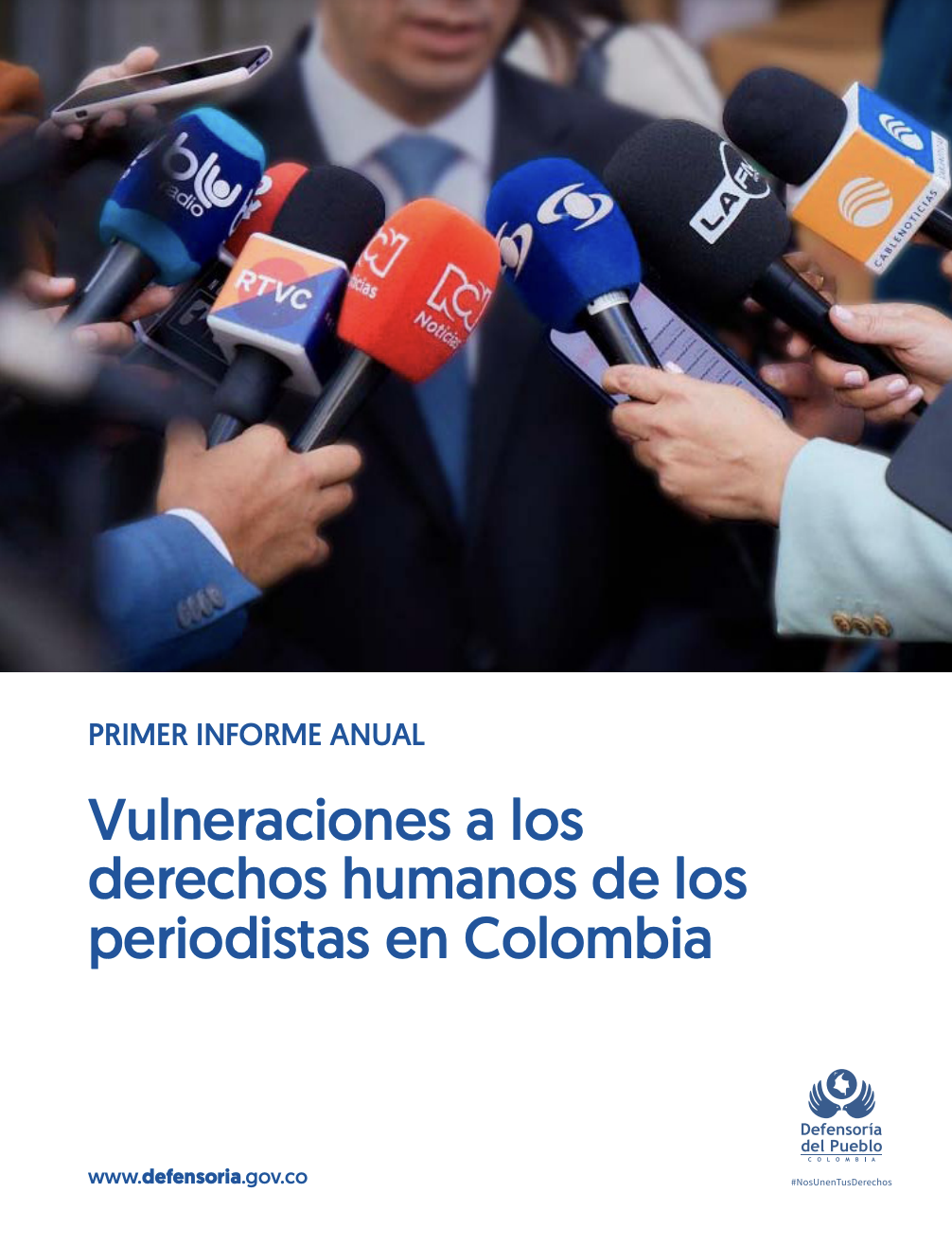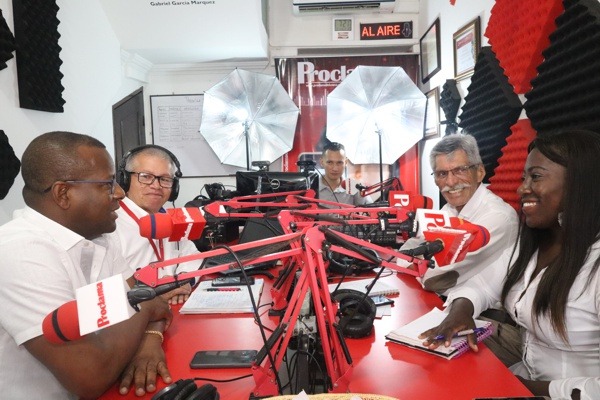Three journalists from Proclama Cauca y Valle, a small news outlet from the small city of Santander de Quilichao in southwestern Colombia, had their lives threatened in July. One received a threat over text message, another through a relative who was stopped by two strangers on the street who said they were being followed, and the third also by strangers while traveling to a nearby town.
The threats followed Proclama Cauca y Valle – a newspaper, radio station and digital platform that has long covered drug trafficking and armed conflict in the mostly rural surrounding region – reporting on illegal armed groups, according to the Foundation for Press Freedom in Colombia, known by its Spanish-language acronym FLIP. Journalists covering armed conflict across Colombia have been threatened at least 37 times this year, with the Cauca region accounting for at least 7 of those instances, according to FLIP.
“The region where we have been doing journalism for over 40 years is perhaps one of the hardest hit by ongoing violence,” Alfonso Luna, director of Proclama Cauca y Valle, told the LatAm Journalism Review (LJR). “This area, due to its geopolitical conditions, was chosen [by criminals] as it offers the best guarantees for maintaining war. In this environment, we continue our work under all kinds of threats and persecution.”

The report by the Ombudsman's Office was carried out through a survey of more than 300 journalists throughout the country. (Photo: Courtesy of the Ombudsman's Office of Colombia)
Journalists working in small cities and rural regions like Cauca are the biggest targets for violence and intimidation of the press in Colombia. According to a recent report from the Ombudsman’s Office of Colombia, journalists across the country face threats to their physical safety, low wages, and stigmatization by public officials. And according to representatives from press freedom organizations, the most vulnerable are journalists outside major cities.
The violence is pervasive. Late last month, journalist Frank Caro was shot and hit by two bullets while driving his car in the town of Caloto, also in Cauca, and taken to the hospital in critical condition, according to the International Federation of Journalists, or IFJ. Days earlier, in the Magdalena department near the Caribbean coast, the director of the digital outlet Plato y la Región Noticias, Cristian Cabrales, escaped a shooting by jumping out of his vehicle and hiding in the brush.
At least three journalists have been killed across the country this year: Mardonio Mejía in January in the northern Sucre department; Jaime Vásquez in April; and Jorge Méndez in June, the last two in the northwestern department of Norte de Santander.
"Conflict and the disputes between different actors over territory or control of the population often turn journalists into targets," Jonathan Bock, executive director of FLIP, told LJR. "There’s a lack of guarantees and constant pressure [on journalists] due to the armed conflict."
The Ombudsman’s Office, an independent government agency that oversees human rights protections in the country, released a report last month on human rights abuses against journalists, finding that 44% of Colombian journalists have experienced some form of human rights violation as a result of their work.
The main perpetrators are illegal armed groups, criminal organizations, and common criminals, responsible for 47.7% of the attacks, according to the survey. Political leaders were responsible for 21.2%.
"Many journalists essentially self-censor due to attacks from different actors," Julio Solano, one of the report’s authors, told LJR. "In many cases, of course, illegal armed groups are involved, but others mention public officials, politicians, and state institutions that also, in one way or another, restrict their freedom of expression."
Colombia has the National Protection Unit, or UNP, created in 2011, which is considered one of the region's pioneering mechanisms for protecting journalists. And since 2022, the Ombudsman’s Office has offered legal support for journalists through an office on digital environments and freedom of expression.
However, a 2022 study by Reporters Without Borders (RSF) on the efficiency of journalist protection in four Latin American countries, including Colombia, found that the UNP’s actions are generally limited to physical security measures and not comprehensive protection. Additionally, the study found security personnel are not sufficiently trained or aware of human rights issues and the journalists' context.
"Institutional protections for at-risk journalists don’t work well, whether due to bureaucratic or administrative issues, or a lack of understanding of the context,” Bock said. “They aren’t operating with urgency.”
The Ombudsman's report found that although 57% of journalists who experienced human rights violations reported them to the authorities, in many cases, their complaints were not properly handled by the authorities. The remaining 43% did not file a complaint.
The directors of Proclama Cauca y Valle filed complaints with the Attorney General’s Office and local authorities over the threats received in July, Luna said. However, while he said that everyone had shown “solidarity,” he does not have high expectations for a positive outcome.
“The problem with the official agencies is that they usually show up, but with complicated bureaucratic procedures that never result in any real solutions against organized crime,” Luna said. “Despite our complaints and demands, we continue to be permanent 'military targets' of armed criminals.”
Seventeen percent of the human rights violations reported in the Ombudsman’s survey were related to psychological, moral and reputational integrity. This includes statements by public officials that disparage or stigmatize the journalistic profession, Solano said.

The Ombudsman's Office report showed that violations to physical integrity and those affecting freedom of expression were the most frequent among respondents. (Photo: Courtesy of the Ombudsman's Office of Colombia)
These types of hostile statements contribute to the atmosphere of violence against the press, especially as they are echoed by figures at the highest levels of government, said Bock. That includes President Gustavo Petro, who since he was sworn into office has frequently criticized media outlets and journalists.
In July, more than 180 journalists signed a letter published in the national newspaper El Espectador, in which they complained that the president’s accusations stigmatize them. Petro responded via his X account, saying he was simply defending himself against “slander.”
"This is, of course, stigmatizing language,” Bock said. “We also see it at different levels, among governors, mayors, officials who, in some way, are emboldened by these examples. It’s becoming normal to insult journalists."
In an effort to reduce tensions between Petro and the news media, representatives from FLIP and RSF met with the president and other officials late last month. During the 90-minute meeting, Petro insisted that some media coverage verges on slander and defamation, according to Bock, who led the FLIP delegation.
Government officials committed to implementing a direct channel to urgently address the most serious cases of threats and attacks against journalists. Bock said that a second meeting with officials from Petro’s administration would take place early this month to define the details of these actions.
"We hope there will not only be an appropriate institutional response but also a government discourse in support of journalism, particularly local journalism, which, as we have mentioned, is the weakest link in Colombia," Bock said.
For his part, Luna is less optimistic. He said he believed the president’s commitments are an opportunistic response to tragic events.
“These commitments are regularly made as a political response to serious situations or emergencies,” Luna said. “[They should] come down to the conflict zones where we practice journalism every day, to come and see for themselves that it’s very different from the theory, the policies they design for victims without considering the victims.”
Journalists in Colombia face another challenge: precarious working conditions, especially in regions outside the major cities.

Journalists from Proclama Cauca y Valle media outlet, based in the small town of Santander de Quilichao, were threatened on at least three occasions in July. (Photo: Courtesy of Proclama Cauca y Valle)
The Ombudsman's study found that 59.6% of the journalists surveyed earn less than 2 million Colombian pesos ($480) per month. Only 12% reported earning more than 4 million pesos ($1,000). Some 73.5% said they live in strata 1, 2, or 3, the bottom of the six strata in the Colombian government’s official economic classification system.
Solano said the survey showed a correlation between the low income of Colombian journalists and their formal education. Only 22% of journalists surveyed said they had some form of post-graduate studies, while 54% reported having only undergraduate studies (bachelor’s degree). About 11.3% had only reached the high school level, and 2.1% hadn't completed basic education.
These data confirm that journalists lack corporate or institutional protection, Solano said. The journalists most affected are those in remote regions, many of whom run their own digital platforms and lack any type of social security.
“A journalist who is in the field, developing an entrepreneurial initiative that eventually grows into an independent alternative media outlet still remains vulnerable because there is no real government support to support their ventures,” Solano said.
For Bock, job precariousness is another layer of the various forms of violence that journalists in Colombia experience. This not only impacts the quality of life of journalists but also their journalistic independence, he added.
“The available financial resources are often the ones that end up undermining the independence of the media, such as official advertising or subsidies from public administrations. There are private companies that also exert economic control over the media,” he said. “We should be thinking about ways to shield journalism from this. Unfortunately, we’re not there yet.”